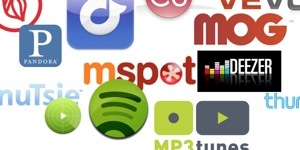How Streaming Will Result in More Revenue All Around
Four years ago I wrote an opinion piece in Billboard warning of the cash-flow crisis that would hit when consumers realized the massive value proposition that streaming subscription services offer. It may have taken longer than I expected, but it is firmly upon us. Despite all the negative press about the low per-stream rate, Spotify is now the No. 2 digital retailer for most labels in terms of income. Apple, Google, Microsoft, Beats Music and many others have launched streaming subscription options for their customers. All told, streaming revenue makes up approximately one-quarter of all income for most content owners, having quadrupled in the last two years. So what is the short-term impact, and how long will it last? Longer term, what does this mean for the average label and artist?
As one of the world’s largest distributors of independent music, INgrooves is uniquely positioned to monitor and evaluate the early impact of the consumer shift from downloads to the access anything, anywhere, anytime format inherent in streaming subscription services. But will such services equal increased revenue? It will, especially for the indies and for the prolific, active artists out there. Here’s why:
The average consumer spends about $40 per year on recorded music. If the average consumer signs up for a streaming service, he or she will spend as much as $120 per year ($10 per month times 12 months), making the “pot” to share three times larger.
The early adopters of streaming services are, generally, high-volume purchasers of music who are indie-leaning and tech-savvy. They know there’s no reason to spend $9.99 on an album when they can pay that amount per month and get access to 2 million albums. As a result, there is a disproportionate impact of the shift to streaming on the indie side compared with major labels that focus on genres that target an older, more mainstream demographic.
It’s not all bad news for the indies: INgrooves’ market share on Spotify is nearly double what it is on Nielsen SoundScan. This is likely due to the type of consumer (e.g., indie, hipster) signing up for streaming services, and the fact that there’s great experimentation and passive listening available through these services.
Remember, $40 is the average, which means half the country is spending a lot less than $40 per month on music because they’re infrequent consumers. If we can reach the tipping point where the low-volume music consumer is spending $120 per year on streaming, then we’ll also start to see the pot of revenue enlarge and the average per-stream royalty rise.
For the next 12-18 months, we’re likely to see physical and download sales decay faster than usual after the holiday season and the shift to streaming continue to accelerate, but not enough to make up the difference.
Based on our analysis of the decay rates and new subscriber growth for streaming services, we’re predicting that we’ll return to last summer’s peak sales levels by late 2014, not counting growth by international expansion and sales from new clients. This means that, for much of the year, artists and labels will have to more proactively manage cash flow, marketing spends and ensure they’re aggressively pursuing all sources of revenue.
Some will be less affected by this newest paradigm shift. For example, international markets, where downloading never truly took off and piracy was rampant, will benefit from streaming’s availability in their countries. Certain genres like country and classical will also likely see a slower shift from their hardcore fans. However, this shift is going to be more dramatic and meaningful than the format shift from physical to digital downloads.
The value proposition for the consumer is just simply too appealing to have any other outcome, and in digital media, the consumer always wins.
Robb McDaniels is founder/CEO of INgrooves Music Group.

